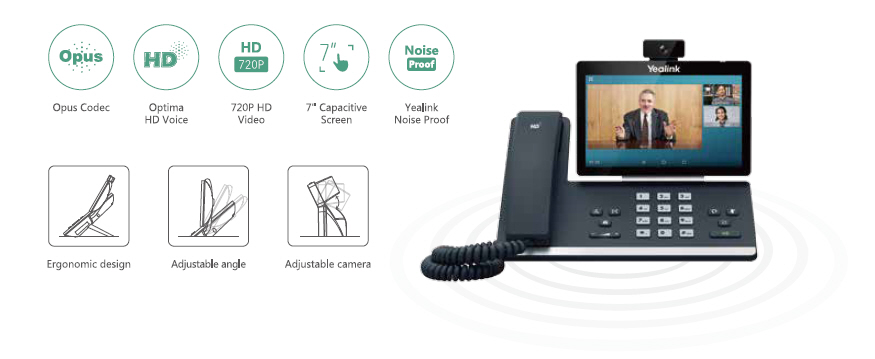Introduction
In today's fast-paced business environment, effective communication is paramount. The advent of Voice over Internet Protocol (VoIP) phone systems has revolutionized how organizations interact with clients and colleagues alike. However, transitioning to a new VoIP phone system can be challenging for staff members who are accustomed to traditional telephone systems. Thus, proper training becomes essential. In this article, we will delve deeply into how to train your staff on using new VoIP phones effectively, ensuring they harness the full potential of this technology.
What is a VoIP Phone System?
A VoIP phone system allows users to make voice calls using the internet rather than traditional telephone lines. By converting voice signals into digital data packets, it enables seamless communication over the web. This advancement not only reduces costs but also enhances flexibility and scalability in communication.
Key Benefits of VoIP Phone Systems
Cost Efficiency: Traditional phone lines can be expensive, especially for long-distance calls. VoIP drastically reduces these costs. Flexibility: Employees can use their VoIP phones from anywhere with an internet connection. Advanced Features: VoIP systems often come equipped with features like call forwarding, voicemail-to-email, video conferencing, and more. Scalability: As your business grows, adding new lines or features is simple and does not require significant infrastructure changes.Understanding the Transition from Traditional Phones to VoIP
Transitioning from traditional phones to a VoIP phone system may seem daunting for some employees. It's crucial to understand that while the fundamental purpose remains the same—making calls—the underlying technology differs significantly.
Differences Between Traditional Phone Systems and VoIP
| Feature | Traditional Phones | VoIP Phones | |---------------------------|-----------------------------------|---------------------------------| | Call Quality | Dependent on physical lines | Can vary based on internet speed | | Cost | High monthly bills | Generally lower costs | | Flexibility | Limited mobility | High mobility; works anywhere | | Features | Basic calling features | Advanced features available |
How to Train Your Staff on Using New VoIP Phones Effectively
Training your staff on using new VoIP phones effectively requires a well-planned approach tailored to meet their needs and learning styles.
Step 1: Identify Training Objectives
Before diving into training sessions, clarify what you want your staff to achieve by learning about the new VoIP phone system:
- Understanding basic functionalities Mastering advanced features Learning troubleshooting techniques Ensuring comfort with remote use
Step 2: Create Comprehensive Training Materials
Develop user manuals or guides that provide step-by-step instructions on using the new system:
User Guides: Detailed instructions covering all functionalities. Video Tutorials: Short videos demonstrating various processes. FAQs Section: Address common concerns or questions regarding the transition.Step 3: Conduct Hands-On Training Sessions
Hands-on workshops allow employees to familiarize themselves with their new tools:
- Schedule group sessions where employees can practice making calls, setting up voicemails, etc. Encourage team collaboration by assigning tasks that require them to utilize different features.
Step 4: Offer Continuous Support
Post-training support is critical for reinforcing what has been learned:
- Establish a help desk or point person who can assist with queries. Regularly check in with teams to address any challenges they might face.
Engaging Staff Through Interactive Training Techniques
To enhance retention and engagement during training sessions, incorporate interactive elements:
Role-playing Scenarios
Create role-play situations where employees must navigate various calling situations using their new VoIP phones. This method fosters teamwork and practical understanding.
Gamification of Learning
Introduce games or quizzes related to navigating the new system effectively. Not only does this make learning fun, but it also reinforces knowledge retention.

Fostering a Supportive Environment During Transition
Transitioning to a new system can create anxiety among staff members; thus, fostering an encouraging environment is vital:
Communicate Openly About Changes
Keep everyone informed about why the change is happening and how it benefits https://adventurous-location.uncrn.co/blog/how-sip-trunking-transforms-traditional-voip-phone-systems/ both the organization and individual employees:
- Share success stories from other companies that have transitioned successfully. Provide regular updates throughout the implementation process.
Address Concerns Individually
Some employees may have unique concerns or fears regarding technology use:
- Schedule one-on-one meetings for those who need extra assistance. Offer personalized coaching sessions if necessary.
Monitoring Progress Post-Training
After completing training sessions on how to use new VoIP phones effectively, it's essential to monitor progress:
Feedback Mechanisms
Implement feedback forms or surveys post-training:

Performance Metrics
Evaluate performance metrics post-transition—such as call quality or response times—to assess whether training was effective.

FAQs About Using New VoIP Phones
What do I need for my VoIP phone system to work?- You need a reliable internet connection along with compatible hardware (VoIP phones).
- Yes! Most providers offer number porting services so you can retain your current number.
- Ensure your internet connection is stable; consider upgrading bandwidth if necessary.
- Like any online service, there are risks; however, implementing strong passwords and encryption can mitigate these risks significantly.
- Yes! Many providers offer mobile applications that enable you to use your smartphone as a VoIP device.
- Setting up voicemail typically involves accessing settings through your user interface; refer to your user guide for specific steps based on your model.
Conclusion
Transitioning staff onto a new VoIP phone system doesn't have to be an uphill battle—it can be an exciting opportunity for growth and efficiency within your organization! By focusing on clear objectives, creating engaging materials, providing hands-on experience, fostering supportiveness during transitions, and monitoring progress post-training strategies effectively prepares staff members for success in navigating their shiny new tools!
In summary, following these guidelines will ensure that you know exactly how to train your staff on using new VoIP phones effectively. This not only enriches employee experience but ultimately leads towards enhanced organizational productivity!